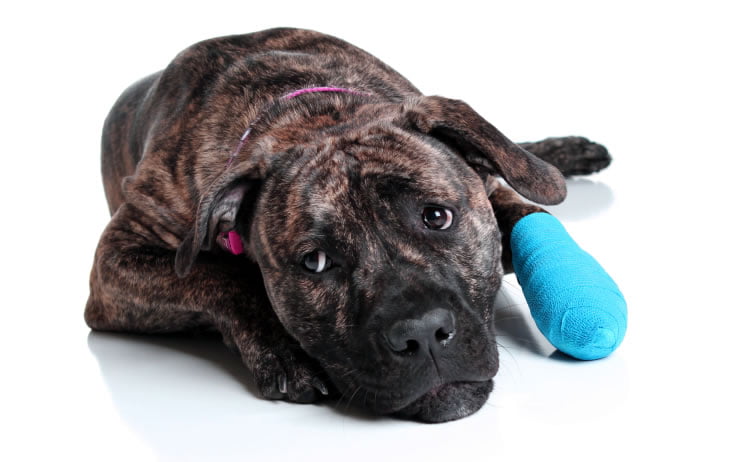Closed wounds
Do not underestimate a closed wound. Because the skin is unbroken, there may appear to be little damage beneath, but dramatic internal injuries and fractures may have occurred. The full extent of these injuries may not be apparent for several days, so even if wounds look minor, you should call your vet for professional advice.
Closed wounds are typically accompanied by some or all of the following symptoms: swelling; pain; discolouration caused by bruising under the skin; increased heat in a specific location; and superficial damage, such as scratches to the skin. To treat a closed wound, apply a cool compress and seek veterinary attention.
Open wounds
Serious open wounds require urgent attention from a vet, but even with a minor injury the first priority is to stop the bleeding ). Open wounds are accompanied by some or all of the following symptoms: broken skin, sometimes only a puncture; pain; in the wound, apply water-soluble jelly to a pair of scissors and then cut the hair, which will adhere to the scissors. Do not use petroleum jelly.
Splints and bandages
If your dog is bleeding, bandage the wound to keep it dry and protect the dog from further injuries, including self-inflicted damage from chewing and excessive licking. Bandaging also provides constant mild pressure to control pain or bleeding and to prevent pockets of serum from building up under the skin. If your dog has a suspected fracture, apply a splint to reduce pain and further injury during transport to the vet. Never try to straighten leg fractures – splint them as they are, wrapping the leg in plenty of cotton wool (winding the roll around the leg) or torn strips of blanket or sheeting. Wrapping a rolled newspaper or magazine into the fabric adds rigidity.
Tourniquets are dangerous
A tourniquet should only be used in cases of profuse and life-threatening bleeding. Improper or prolonged use cuts off the blood supply and can lead to the loss of an entire limb. To apply a tourniquet, wrap a tie or strip of torn sheet above the bleeding wound and tie it with a releasable knot. Slip a pen, pencil, or stick into the knot and twist until bleeding stops. Hold or tie this down in place for no more than 10 minutes. Loosen every few minutes while you transport the dog to the veterinary clinic. Do not use a tourniquet if your dog has been bitten by a venomous snake, because it will increase any inflammation. Instead, immobilize the bitten area and apply an ice pack to reduce the size of local blood vessels while you get urgent veterinary attention.
Moving an injured dog
When lifting and transporting an injured dog, avoid bending or twisting because this can cause further injury. Small dogs can be wrapped in a bulky blanket. An ironing board or removable shelving makes a useful temporary stretcher for bigger dogs. Secure the dog to the stretcher with neckties, torn sheeting, or rope. Make sure that the dog’s neck is extended so that breathing is not obstructed.

Leave A Comment